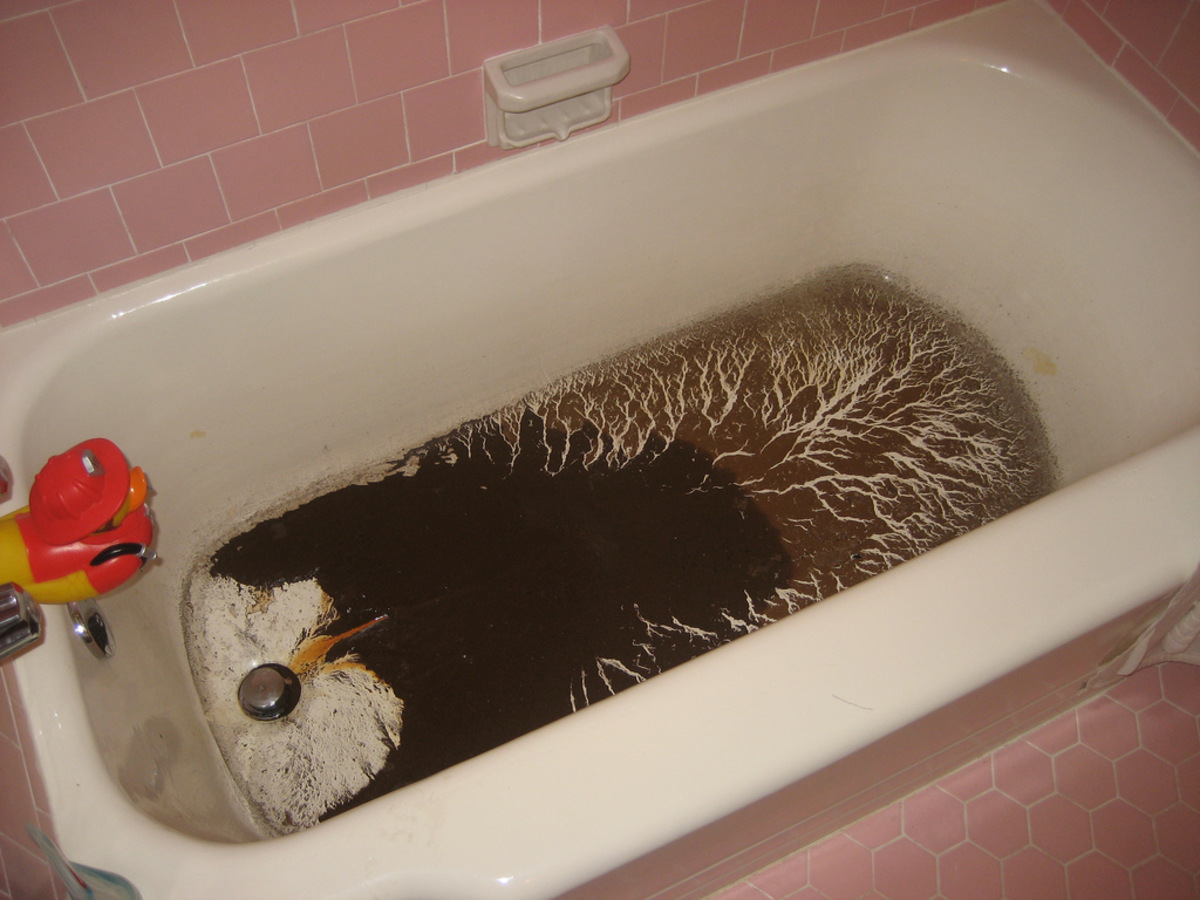Explanations for Sewage Rising Through the Bathtub
Explanations for Sewage Rising Through the Bathtub
Blog Article
Just about everyone has their personal idea in relation to Why is There Sewage Coming Up Through the Bathtub.

Sewer backup in the bathtub can be a traumatic and unhygienic issue for any type of house owner. Not only is it inconvenient, yet it also poses serious wellness dangers and indicates underlying concerns with the plumbing system. Comprehending why sewer is coming up with the bathtub is vital for taking suitable action to deal with the problem successfully.
Introduction to the Concern
Recognizing the Trouble
When sewage starts backing up right into the bathtub, it's a clear indicator of a problem with the drainage system. The wastewater that must be flowing away from your home is instead discovering its way back into your living space, which can bring about considerable damage and health hazards.
Possible Causes
A number of factors can add to sewer backup in the bath tub. From obstructions in the drain line to problems with the plumbing facilities, identifying the origin is necessary for locating a remedy.
Usual Factors for Sewage Backup
Obstructions in the Drain Line
Among the most typical reasons for sewer backup is an obstruction in the drain line. This can take place due to the buildup of debris, oil, or international items in the pipelines, protecting against proper circulation and creating sewage to support into your tub.
Tree Origin Invasion
Tree origins looking for wetness and nutrients can penetrate sewer lines via tiny fractures or joints. Gradually, these origins can grow and expand, causing considerable damages to the pipelines and causing sewer backup problems.
Aging Framework
Older homes might have outdated plumbing systems that are a lot more at risk to corrosion, fractures, and damage. As pipes age, they come to be extra prone to leakages and clogs, increasing the possibility of sewer backup cases.
Heavy Rainfall or Flooding
Throughout periods of heavy rainfall or flooding, the drain system might come to be overwhelmed with excess water, causing back-ups and overflows. This can cause sewer supporting right into bathtubs and other components inside the home.
Wellness Risks Associated with Sewer Backup
Contamination of Water System
Sewage backup can pollute the water system in your home, presenting a serious health threat to you and your family members. Direct exposure to infected water can lead to gastrointestinal issues, skin infections, and other diseases.
Spread of Illness
Sewer consists of hazardous bacteria, viruses, and bloodsuckers that can trigger a variety of diseases, consisting of liver disease, cholera, and gastroenteritis. Coming into contact with sewage or polluted surfaces places you in danger of infection.
Mold Growth
Wetness from sewage back-up can create perfect conditions for mold and mildew development in your house. Mold and mildew spores can exacerbate respiratory troubles and cause allergies in delicate people, making punctual clean-up essential.
Indicators of Sewer Back-up
Foul Odors
Unpleasant odors rising from drains or fixtures, specifically in the restroom, might indicate sewer back-up concerns. These odors are usually solid and relentless, indicating an issue that requires prompt attention.
Slow Draining Fixtures
Tubs, sinks, and bathrooms that drain pipes gradually or not in any way could be experiencing sewer backup. If multiple components are influenced all at once, it's most likely that the issue stems from a typical point, such as the main sewage system line.
Gurgling Noises
Weird gurgling or gurgling noises coming from drains when water is running elsewhere in the house are a sign of air caught in the plumbing system. This air build-up can result from sewage backup and need to be checked out quickly.
Immediate Actions to Take
Turning Off Supply Of Water
In the event of sewer backup, it's vital to turn off the water system to prevent additional contamination and damage. Locate the primary water shutoff valve in your house and closed it off up until the problem can be dealt with.
Getting In Touch With an Expert Plumber
Handling sewer back-up is not a do it yourself task. Call an accredited plumber with experience in managing sewage-related problems to assess the circumstance and carry out required repair work or clean-ups.
Avoiding Contact with Infected Water
Up until the sewer backup is settled, prevent contact with contaminated water to stop the spread of germs and pathogens. Use safety gear if you have to be in the damaged location and wash your hands completely later.
Preventive Measures
Normal Maintenance of Sewer Lines
Set up routine evaluations and upkeep of your sewage system lines to recognize and attend to prospective issues prior to they escalate into major troubles. This can include cleaning out particles, checking for tree root breach, and repairing any broken pipelines.
Setting Up Bayou Shutoffs
Take into consideration setting up bayou shutoffs in your plumbing system to stop sewage from flowing back right into your home during periods of heavy rainfall or flooding. These valves automatically close when water starts backing up, protecting your home from contamination.
Correct Disposal of Family Waste
Prevent flushing anything apart from toilet tissue and human waste down the toilet to avoid blockages and clogs in the sewage system line. Dispose of oil, oil, and other household chemicals effectively to reduce the threat of plumbing troubles.
Tidying up After Sewage Backup
Sanitation Procedures
Thoroughly decontaminate and sanitize impacted areas after sewer backup to eliminate unsafe microorganisms and stop mold development. Use ideal cleansing products and protective gear to make sure secure and efficient clean-up.
Reconstruction of Affected Locations
Fix any kind of damages to flooring, walls, or components caused by sewage back-up. Depending on the degree of the damage, you might need to replace carpets, drywall, or various other products to recover your home to its pre-loss condition.
Why Is Water Backing Up in My Bathtub When I Flush My Toilet?
What to do about a sewer line clog
First, don’t bother with plunging. No amount of plunging will dislodge the clog in a sewer line. The clog is too far away. Plungers are for clogs in the toilet itself, not the sewer line. Plus, the most likely causes of a sewer clog are:
Tree roots Flushed toys or feminine products Grease buildup Those items don’t move easily. And in the case of tree roots, the roots need to be cut out of the pipe and the pipe will need to be repaired.
You’ll need a closet auger. A closet auger is a type of plumber’s snake with a protective cover to keep from scratching the delicate porcelain toilet. If the clog is further down, you may need to remove the toilet or use one of your cleanouts to get to the clog.
We also recommend doing a video inspection of the drain to ensure that the cause of the clog has been completely removed. Otherwise, you could have the same problem again in a few days or weeks.
https://mspplumbingheatingair.com/blog/why-is-water-backing-up-in-my-bathtub-when-i-flush-my-toilet

I recently found that post about Why is Sewage Backing Up Into My Bathtub? when doing a search on the internet. Appreciated our write up? Please share it. Help somebody else find it. I thank you for your readership.
Click Here!
Report this page